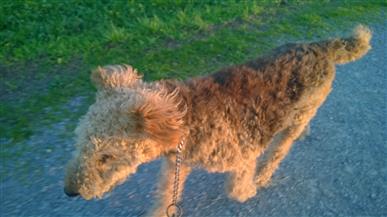Dog food allergy testing and the elimination diet as dog skin solution
 Blood tests can be used to find what your dog might be allergic to in food, but they are often classed as inconclusive. The rast test that we will look at in later articles on this site is one such test, but the complexity of a dogs reaction to food proteins is such that such diagnosis test are typically used as guides in conjunction with exclusion diets.
Blood tests can be used to find what your dog might be allergic to in food, but they are often classed as inconclusive. The rast test that we will look at in later articles on this site is one such test, but the complexity of a dogs reaction to food proteins is such that such diagnosis test are typically used as guides in conjunction with exclusion diets.
EXCLUSION FOOD DIET FOR DIAGNOSIS OF DOG FOOD ALLERGIES
It is likely that more conclusive tests will be developed but in the meantime the exclusion diet is used almost as the ONLY test by vets to check what a dog might be allergic to in food.
As mentioned in the dog food allergy article, dogs are typically allergic to the protein in a given single food such as grain or meat and the only way to truly test this theory is to completely remove the protein (single food) and see if the problem (skin disease or gastro signs) completely disappear.
Vets arrange for the elimination food trials that usually last for six to eight weeks and involve feeding a dog a food that is likely to not cause an allergic reaction and one that the dog typically has not eaten before.
The dog can be put on a manufactured “Commercial diet” of low allergen foods such as: rice, potato, venison, fish, kangaroo.
If a dog stops having allergic reactions (often takes 4-6 weeks to cease) then one by one, over a week for each one, an owner can cycle through the likely allergic foods and see which protein makes the itchiness and skin issues reoccur. Again you will need to be diligent in not giving treats and only exposing your dog to one new food such as soy PLUS the other foods used on the elimination diet that the dog didnt react to, to ensure they are getting a full nutrition while on the test.
This is process is called a trial elimination diet, and is the ONLY way to 100% confirm a diagnosis of a dog food allergy.
Things that can ruin the exclusion diet allergy test of your dog
Note during the feeding trial the dog can’t eat dog treats or anything other than what is on their food diet. If you are not strict on this, the whole trial can be wasted and you may never know if they are allergic to a food or not, because symptoms might continue up to the 8 week mark and then you can’t reintroduce any likely offending food to see if it causes a reaction, because the reaction has been continuing from food leakage.
The diagnosis of food allergy is obviously NOT complete until the allergy is caused again by feeding your dog the original food that created the allergy in the first place.
Note there are many allergens in the environment that can cause pruritis (extreme skin itching) after the food allergy is controlled. And dogs can have food allergies and atopy (and contact skin allergies) all in conjunction.
So if a dog doesn’t stop having a skin reaction on an elimination diet it can be because they are allergic to a food used on the diet, or other allergies are also present, or food allergy AND other allergies such as pollen can be causing a combined reaction.
The hope of the elimination diet is that if a food allergy is the primary cause of a dog allergic reaction, that the elimination diet will help pin point that issue, and you can clear up other allergies later.